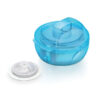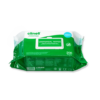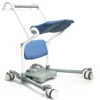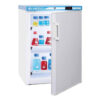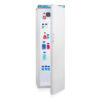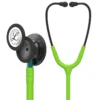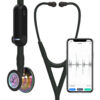Differences between Laboratory and Pharmacy Fridges
When you’re dealing with fridges designed for a medical environment, it’s important to make sure the model you purchase is suitable for your specific requirements. These specialized fridges play pivotal roles in scientific research, clinical laboratories, medical facilities, pharmacies, and healthcare settings. The differences between laboratory and pharmacy fridges allow each to tailor themselves uniquely to the precise needs of their respective areas.
Purpose:
Laboratory Fridges: Primarily used in scientific research, clinical laboratories, and medical facilities. These fridges frequently store biological samples, reagents, chemicals, and other materials specific to laboratories that require precise temperature control.
Pharmacy Fridges: Specifically designed for pharmacies, hospitals, and healthcare settings to store medications, vaccines, and temperature-sensitive pharmaceuticals safely. Their main purpose is to ensure the stability and efficacy of medications.
Temperature Range:
Laboratory Fridges: Typically offer a wider temperature range and more precise temperature control. They can maintain temperatures ranging from low for storing sensitive biological samples to above freezing temperatures, depending on the specific research or testing requirements.
Pharmacy Fridges: Designed to meet pharmacists’ needs and to safely store medicines according to manufacturers’ instructions. Pharmacy fridges typically have a temperature range of +2°C to +8°C which is perfect for storing most medications and vaccines (known as the cold chain).
Temperature Monitoring and Alarms:
Laboratory Fridges: May or may not have temperature alarms, depending on the specific lab’s needs and the contents of the fridge.
Pharmacy Fridges: Will typically have alarm systems that alert users when there is a temperature change or another issue that could affect the stability of the stored medications.
Security and Access Control:
Laboratory Fridges: Security measures can vary but may be less strict compared to pharmacy fridges due to the diverse fridge contents..
Pharmacy Fridges: May have enhanced security features to prevent unauthorized access, as the contents are often valuable and sensitive.
Interior Layout:
Laboratory Fridges: May have various shelving configurations and specialized storage options to accommodate a wide range of sample sizes and types, including racks, trays, and drawers.
Pharmacy Fridges: Interior materials are typically easy to clean and maintain to prevent cross-contamination between medications.
Regulation and Compliance:
Laboratory Fridges: Regulations for laboratory fridges vary based on the stored substances and the laboratory’s specific requirements. Compliance with standards like ISO 9001 or ISO 17025 may be applicable.
Pharmacy Fridges: Must comply with strict regulatory standards set by regulatory medical authorities.
Cost:
Laboratory Fridges: Costs can vary widely based on size, temperature range, and additional features but may be more budget-friendly for research labs with less stringent temperature control needs.
Pharmacy Fridges: Typically more expensive due to the stringent temperature control and regulatory compliance requirements.
We hope this blog post has helped to explain the difference between laboratory and pharmacy fridges. Click the images below to explore the range we have available!







